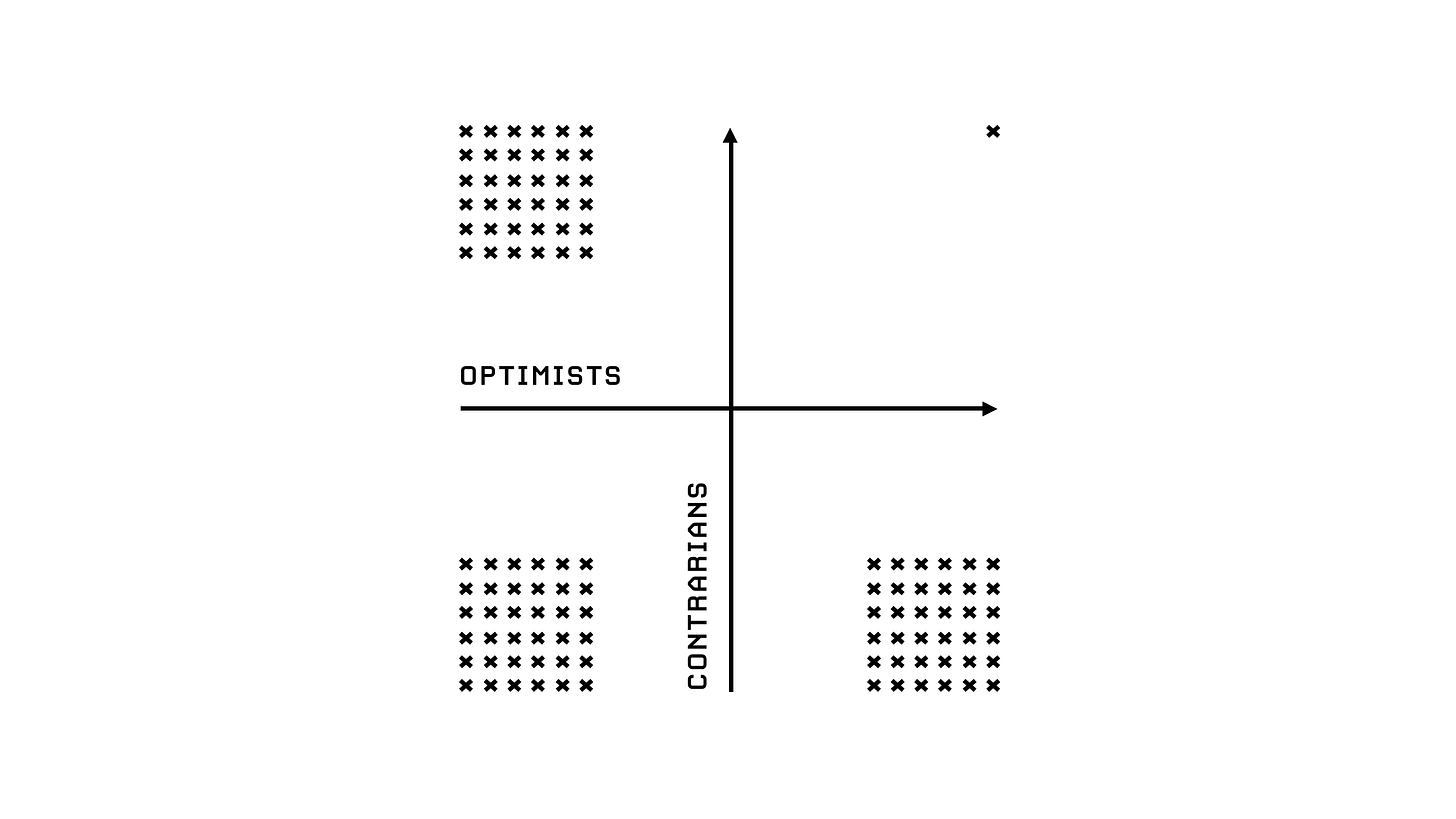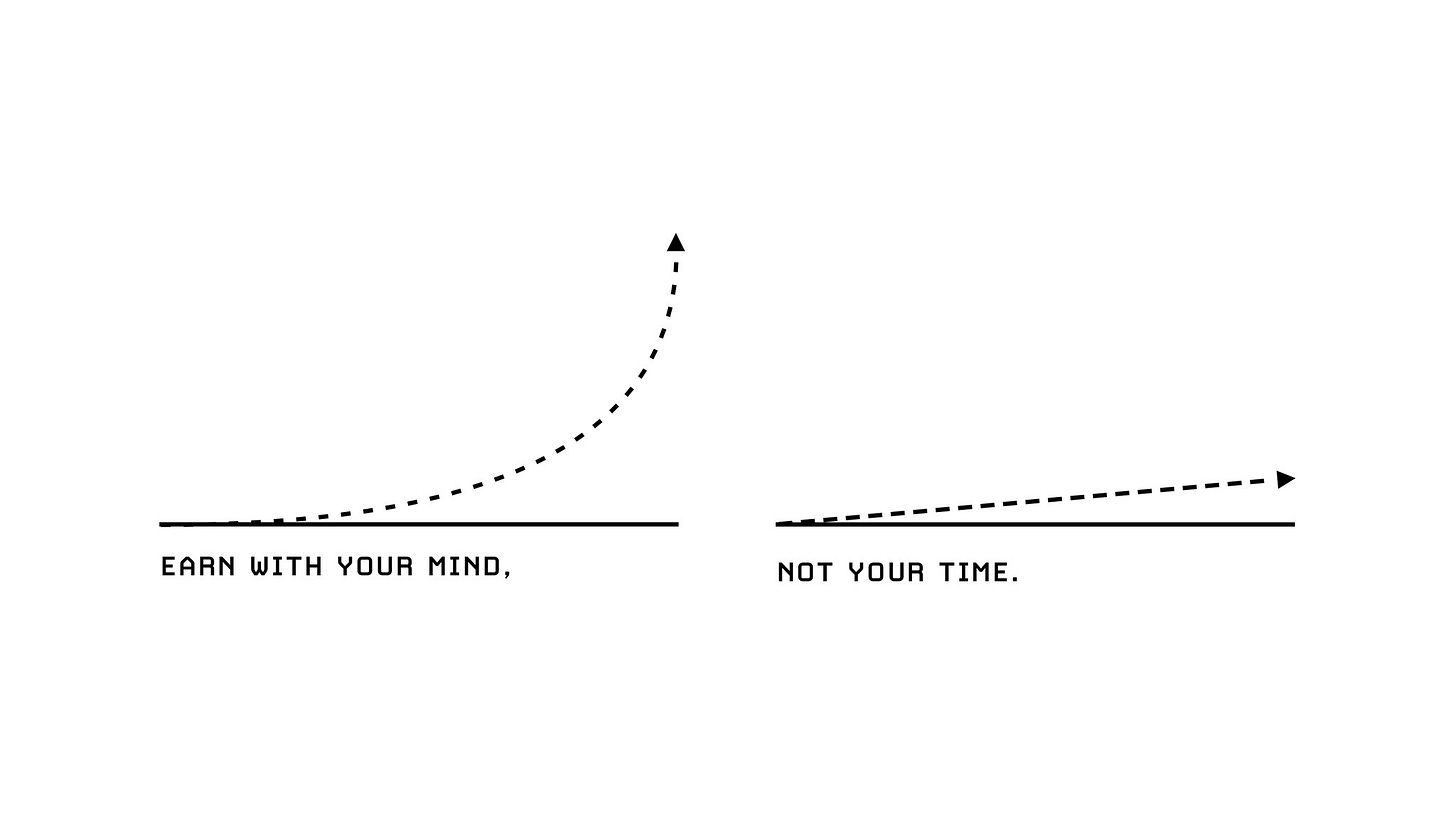Jack Butcher Is Worth Understanding
Wisdom, web3, and the branding power of NFTs
Two worlds spin at Jack Butcher’s fingertips.
On one hand is the new world: the modern web. It is his distorted canvas — a medium the ad agency defector turned web3 designer has leveraged to the fullest extent.
This world is the noise.
On the other spins the timeworn wisdom of the old world. It is his material — musings of painters and stoics, naturalists and poets, philosophers, and Nobel laureates.
This world is the signal.
The two combine to form his brand: Visualize Value, a project Jack bootstrapped to leverage himself out of a day job. The spirit of the brand boils down to this: take a complicated idea, break it apart, and then visualize its essence to hammer home the point. Jack started sharing his signature black and white distillations of big thoughts from great thinkers as a way to show proof of work. True to his brand, his value proposition was universal and concise: If you have something complicated to explain, I can help you visualize it to explain it better.

“He who is not contented with what he has, would not be contented with what he would like to have.” ― Socrates
“It is difficult to find happiness within oneself, but it is impossible to find it anywhere else.” — Arthur SchopenhauerFor years Jack’s art yielded little attention. But he kept at it, iterating and refining until he eventually struck oil leveraging the open network of Twitter (this is in contrast to closed networks like Facebook, Instagram, and LinkedIn, that restrict engagement with users you are not connected with). A few big fish caught on to the power of Jack’s work and endorsed it in the form of a retweet, setting off a crowdsourced campaign of wisdom across walls, feeds, and timelines.
The messages hit, not only because they are true, but because they are a potent antidote to the modern web — a web that is blind drunk and disturbingly content on ad-driven models that incentivize hijacked attention over intellectual curiosity. Jack’s work cuts through the noise like a lighthouse, deploying hand-picked insights that extol the power of mindfulness, specific knowledge, and leverage as a means for self-actualization and happiness. Or as he more eloquently coins it: “A Mental Wealth Service”.
In this way, Jack is more than just a savvy designer. He is a dealer of lightbulb moments.
His guerilla marketing tactics work. I know this because I have worked in advertising and brand building for ten years and have never seen anything like it. What should rely on a Madison Avenue media plan falls on organic shares, retweets, and community engagement. In plain English, that means the people.
The fundamentals rooted in his designs are the same ones taught in his course offering, another branch of the Visualize Value giving tree. The positioning — New economy, new rules — is a timely capitalization of a much larger shift in online behavior.
If the term non-fungible token hasn’t bugged you enough already, then you might want to go deeper. You’ll find there are things in motion via blockchain technology, DAOs (decentralized autonomous organizations), and social tokens, that have the potential to update art and commerce as we know them. NFTs are just the tipping point.
Ironically, Jack’s work found me in a book, and out of a job. I’m also an ad agency defector. Trying to spur myself out of a rut, I began studying the thinking of angel investor turned philosopher, Naval Ravikant. The book, “The Almanak of Naval Ravikant” compiled by Eric Jorgenson, and released for free as ‘public service’, has become a web3 gospel of sorts. The quick read blueprints actionable steps for unlocking and leveraging specific knowledge to build wealth and happiness. Naval believes neither are traits we are born with but rather skills we can learn. He also believes in the power of reading, meditation, self-transformation, and not taking yourself too seriously.
When the time came to supplement Naval’s principles throughout the book, Jorgenson knew who to turn to.
It might sound trite to say this work altered the course of my life, but that’s what it did. After years of playing patty-cake with managers who did not share my values, burning working hours on vapid ad campaigns that left me uninspired and exhausted, I decided it was time to get serious about my writing.
I spent a week cooking up an article to try and help outsiders make sense of NFTs. NFTs are complicated, so I took a page out of Eric’s book and borrowed a few of Jack’s designs to help clarify my points. After publishing the essay on my substack, I tweeted it Jack’s way. I wanted to thank him for the inspiration while apologizing for ripping off his IP. Then a funny thing happened. Instead of scolding me for pirating his work, he retweeted my article to 160,000 followers. Within a week my layman’s guide was read over 4,000 times.
I don’t share these numbers to pad my creative confidence (although it did that too), I share them because my story supports a much more significant reality of web3, which is this: As power drains from social and search, influence will flow back to the individual. Any creator who can build a community will have a platform.
Take Jack’s wink-of-a-podcast, “Not Investment Advice” — a weekly source for all that’s relevant in the wild world of meme trading. Or how he’s used NFTs to raise money for COVID relief in India, and then for displaced families in Afghanistan — an initiative Peter Diamandis, XPRIZE founder and Elon Musk contemporary, rightfully praised in a recent Twitter thread.


I am not writing about Jack Butcher because he retweeted my article. I am writing about Jack Butcher because I believe he is at the forefront of a seismic shift in human behavior.
Over the last few months, Jack and I have built a creative rapport that I’m grateful for. It's a new type of work for me. The kind that makes me excited to hear my alarm go off in the morning. One idea I tossed his way was an article on choosing my first NFT. I wanted skin in the game and thought buying one, and writing about it, would provide a helpful perspective for open-minded newcomers.
As I researched where to start, some common knowledge emerged: for one, you should seek projects with an aesthetic appeal that means something to you, you should look for pieces that stir a visceral reaction within you, and, more than anything, you should check the reputation of the creator to see what they are known for in the space, and what their vision is for the future.
You see, when you buy an NFT you’re not just buying a jpeg, you’re buying into a movement. And I knew right where to turn.
After all, Jack is a dealer of lightbulb moments.













